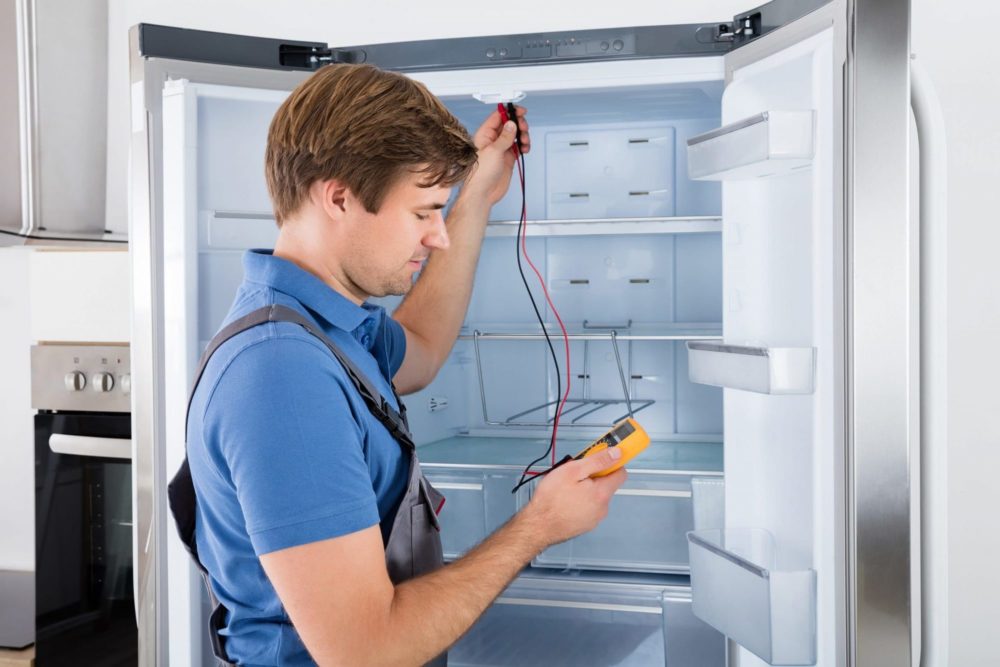If your LG bottom freezer is not freezing, there may be a problem with the temperature settings or the evaporator fan. The issue could also be due to a faulty defrost system or a malfunctioning compressor.
One possible solution is to check and adjust the temperature controls to ensure they are set correctly. If that doesn’t resolve the problem, you may need to troubleshoot or replace the evaporator fan, defrost system components, or the compressor. It’s also a good idea to clean the condenser coils and check for any blockages in the freezer vents, as these can impact the freezer’s performance.
Identifying Common Issues
Power Supply Problems: One common issue that can cause an LG bottom freezer not to freeze is a problem with the power supply. Check if the freezer is properly plugged in and if the power outlet is functioning. Ensure that the circuit breaker or fuse hasn’t tripped or blown. Address any power supply issues to ensure the freezer receives the necessary electricity to operate.
Thermostat Settings Check: Incorrect thermostat settings can also lead to a non-freezing bottom freezer. Make sure the thermostat is set to the appropriate temperature for freezing. Consult the user manual for specific instructions on adjusting the thermostat and ensure it is set correctly.
Blocked Air Flow Vents: Blocked air flow vents prevent the cold air from circulating properly and can impact freezer performance. Inspect the vents and remove any obstructions such as food packaging or ice build-up. Clearing the air flow vents can help restore optimal freezing conditions.
Overloaded Freezer Compartment: Overloading the freezer compartment can impede proper air circulation, leading to inadequate freezing. Make sure there is enough space between food items for air to circulate freely. Organize the contents of the freezer to allow for better airflow and ensure better freezing results.
Step-by-step Troubleshooting Guide
If your LG bottom freezer is not freezing, you can follow this step-by-step troubleshooting guide to identify and resolve the issue. Start by inspecting for frost build-up on the evaporator coils. Excessive frost can obstruct the airflow and prevent proper cooling. Use a flashlight to check the coils and defrost them if necessary. Next, verify the function of the evaporator fan by listening for it running when the freezer is operating. If the fan is not running, it may need to be replaced. Test the defrost heater using a multimeter to ensure it is functioning correctly. If the heater is faulty, it won’t efficiently remove frost from the coils. Lastly, assess the control board for any visible signs of damage or burned-out components. A malfunctioning control board can disrupt the freezer’s cooling system. Follow these troubleshooting steps to address the issue with your LG bottom freezer not freezing.
Advanced Fixes For Persistent Problems
Advanced Fixes for Persistent Problems
If you have an LG bottom freezer that is not freezing properly, here are some advanced fixes that you can try:
Replacing a Faulty Start Relay:
Check if the start relay in your freezer is faulty. Remove the relay and test it using a multimeter. If it is not working properly, replace it with a new one.
Compressor Functionality Test:
To check if the compressor is functioning correctly, disconnect the start relay and run a continuity test across the compressor terminals. If there is no continuity, the compressor may be faulty and needs to be replaced.
Seal and Gasket Integrity Check:
Inspect the seal and gasket for any signs of damage or wear. If there are gaps or cracks, it can affect the cooling efficiency. Replace the seal and gasket if necessary.
Coolant System Inspection:
A refrigerant leak can also cause issues with freezer cooling. Inspect the coolant system for any leaks or damage, and if found, contact a professional technician for repairs.
Remember, if you are not confident in performing these advanced fixes yourself, it is always recommended to seek the help of a professional technician to avoid any further damage to your LG bottom freezer.

Credit: fixappliances.ca
Frequently Asked Questions For Lg Bottom Freezer Not Freezing
Why Is My Bottom Freezer Not Freezing?
If your bottom freezer is not freezing, it could be due to a faulty thermostat, a clogged air vent, or a problem with the evaporator fan motor. Check the thermostat settings, clean the air vent, and inspect the fan motor for any issues.
What Would Cause My Lg Freezer To Stop Freezing?
Possible causes for your LG freezer to stop freezing could be a malfunctioning compressor, clogged air vents, thermostat issues, or a refrigerant leak. It’s recommended to check these components or seek professional help to diagnose and fix the problem.
Why Is My Lg Bottom Freezer Not Making Ice?
If your LG bottom freezer is not making ice, check the following: 1) Ensure the water supply line is connected and turned on. 2) Clean the ice maker to remove any clogs or blockages. 3) Verify that the ice maker is turned on and set to produce ice.
4) Make sure the freezer temperature is set to the recommended level. 5) Contact LG customer support for further assistance.
Why Is My Lg Bottom Freezer Not Freezing?
The LG bottom freezer may not be freezing due to a faulty thermostat, dirty condenser coils, or a malfunctioning compressor. Check the thermostat settings, clean the condenser coils, and listen for any unusual sounds from the compressor. If the issue persists, contact a professional technician for further diagnosis and repair.
Conclusion
To summarize, if you find that your LG bottom freezer is not freezing, it is essential to troubleshoot the issue promptly. By following the troubleshooting steps mentioned in this blog post and seeking professional assistance if needed, you can ensure that your freezer functions efficiently again.
Remember to regularly clean and maintain your appliance for optimal performance. Taking these steps will help you avoid food spoilage and unnecessary expenses in the long run.
